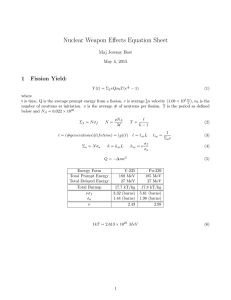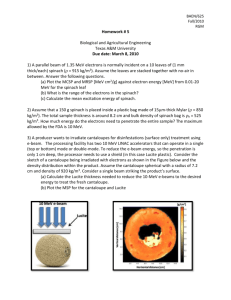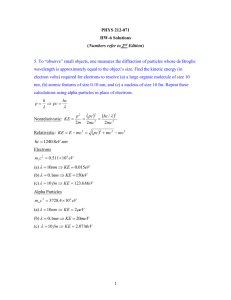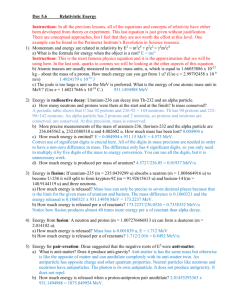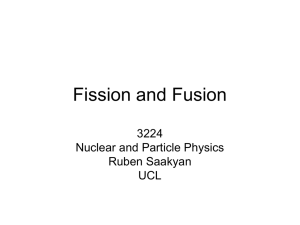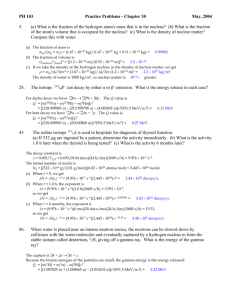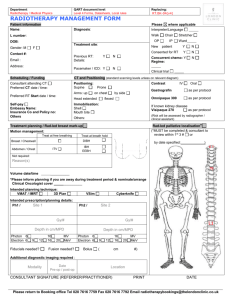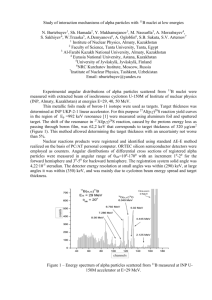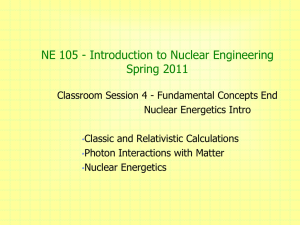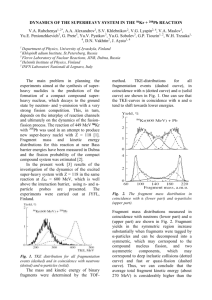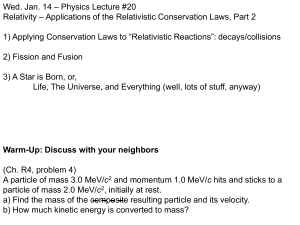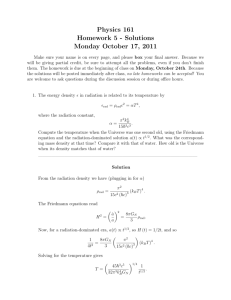Physics 250 - WordPress.com
advertisement
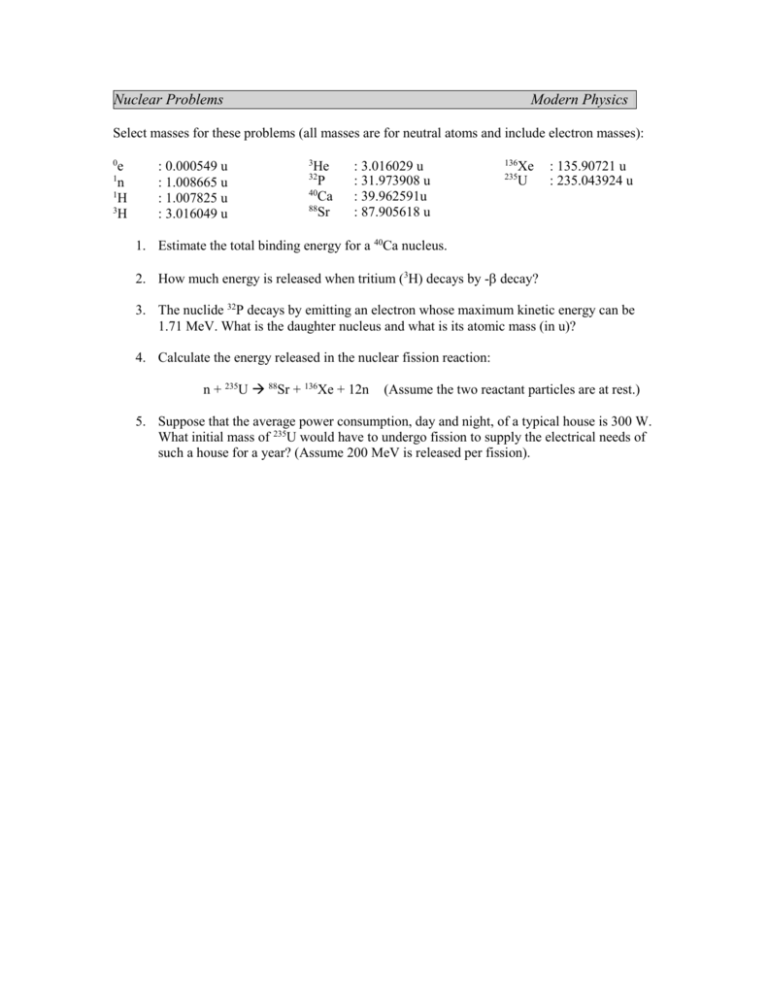
Nuclear Problems Modern Physics | Select masses for these problems (all masses are for neutral atoms and include electron masses): 0 e n 1 H 3 H 1 : 0.000549 u : 1.008665 u : 1.007825 u : 3.016049 u 3 He P 40 Ca 88 Sr 32 : 3.016029 u : 31.973908 u : 39.962591u : 87.905618 u 136 Xe U 235 : 135.90721 u : 235.043924 u 1. Estimate the total binding energy for a 40Ca nucleus. 2. How much energy is released when tritium (3H) decays by - decay? 3. The nuclide 32P decays by emitting an electron whose maximum kinetic energy can be 1.71 MeV. What is the daughter nucleus and what is its atomic mass (in u)? 4. Calculate the energy released in the nuclear fission reaction: n + 235U 88Sr + 136Xe + 12n (Assume the two reactant particles are at rest.) 5. Suppose that the average power consumption, day and night, of a typical house is 300 W. What initial mass of 235U would have to undergo fission to supply the electrical needs of such a house for a year? (Assume 200 MeV is released per fission). Nuclear Problems - Solutions Modern Physics | 1. Estimate the total binding energy for a 40Ca nucleus. 20 x 1.007825 u 20.156500 u 20 x 1.008665 u + 20.173300 u 40.329800 u - 39.962591 u 0.367209 u X 931.5 MeV/u 342 MeV 20 protons 20 neutrons atomic mass ∆m 2. How much energy is released when tritium (3H) decays by - decay? H 0e + 3He 3 parent daughter ∆m 3.016049 u (includes 1 electron) - 3.016029 u (includes 2 electrons) therefore includes beta particle 0.000020 u X 931.5 MeV/u 0.01863 MeV or 18.63 keV 3. The nuclide 32P decays by emitting an electron whose maximum kinetic energy can be 1.71 MeV. What is the daughter nucleus and what is its atomic mass (in u)? 32 P 0e + 32S 1.71 MeV .0018357 u parent daughter ∆m 31.973908 u (includes 15 electrons) ?? u (includes 16 electrons) therefore includes beta particle 0.0018357 u - daughter mass 31.9720723 u 4. Calculate the energy released in the nuclear fission reaction: n + 235U 88Sr + 136Xe + 12n (Assume the two reactant particles are at rest.) reactants 1.008665 u 235.043924 u 236.052589 u (includes 92 electrons) products 87.905618 u 135.90721 u 12.10398 u 235.916808 u ∆m (includes 92 electrons) 0.135781 u X 931.5 MeV/u 126.48 MeV 5. Suppose that the average power consumption, day and night, of a typical house is 300 W. What initial mass of 235U would have to undergo fission to supply the electrical needs of such a house for a year? (Assume 200 MeV is released per fission). # fissions = 1 fission x 1 MeV 200 MeV 1.6 x10-13joules x 300 joules x 3.1536 x107 sec 1 sec # fissions = 2.9565 x1020 There are 6.02 x1023 uranium atoms in 235.043924 grams. 2.9565 x1020 ??? An initial mass of 0.115 grams


